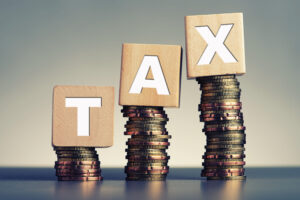
Summary: The Pennsylvania Senate passed legislation that would reduce the rate of the state’s personal income tax (PIT) from 3.07 percent to 2.8 percent. The legislation would also create a tax credit for volunteer emergency medical technicians and eliminate the gross receipts tax on electricity providers.
According to the state’s Tax Compendium and its statistical supplement, the PIT “is levied against the taxable income of resident and nonresident individuals, estates and trusts, partnerships, S corporations, business trusts, and limited liability companies that are not taxed as corporations for federal purposes.”
It was the largest source of tax revenue for the general fund in fiscal year (FY) 2022-23, with $17.6 billion in collections accounting for 39 percent of general fund revenue. Through April of FY 2023-24, PIT collections totaled $15 billion, which was 1 percent below estimate but nearly 1 percent above collections compared to the same period in FY 2022-23.
The last time the PIT rate was cut was 1993 when it was lowered from 2.95 percent to 2.8 percent. Since the tax was instituted in 1971, it has been reduced six times. It was raised to its present 3.07 percent rate in 2004.
The PIT rate reduction is estimated to reduce tax collections by $614.5 million in FY 2024-25, $1.7 billion in FY 2025-26 and $1.8 billion in FY 2026-27.
The Tax Foundation’s 2024 report on state income taxes shows that 14 states—Pennsylvania being one—have a flat income tax rate, 29 states have graduated income tax rates and seven have no income tax.
Of the 14 flat-tax states, two (New Hampshire and Washington) tax only interest or capital gains. Pennsylvania has the third-lowest rate of the remaining 12 states with Indiana (3.05 percent) and Arizona (2.5 percent) lower. Pennsylvania is the only state in the group with neither a standard deduction nor a personal exemption. The Tax Compendium states that there are available “exclusions, deductions, and credits” that can lower the tax payment.
As was pointed out in the most recent Policy Brief on state revenue data (Vol. 24, No. 9) “Pennsylvania needs to be a more welcoming state for all business as has been done in high-growth southeastern states. Some obvious steps to take include Pennsylvania adopting Right-to-Work, ditching controls like [the Regional Greenhouse Gas Initiative] and eliminating the right of teachers and transit workers to strike.”
There’s little to any indication that those policy changes are up for consideration in the budget deliberations or on the policy agenda. For example, Right-to-Work legislation was last introduced in the 2017-18 session. The governor’s Pennsylvania Climate Emissions Reduction Act (PACER)—“a Pennsylvania-specific cap-and-invest program”—has been introduced in both chambers of the General Assembly. Public-sector strikes by teachers and transit workers are still permitted when there is a bargaining impasse.
In the meantime, the Tax Foundation’s 2024 report notes that states, particularly those that are Right-to-Work, are making changes to their personal income tax rates. Of the 26 states that are Right-to-Work, six have no personal income tax, eight have flat rates and 12 have graduated rates. Flat rate states like Indiana, Kentucky and North Carolina made rate reductions; Georgia moved from a graduated structure to a flat-rate structure; graduated rate states like Iowa, Nebraska and South Carolina made reductions to their top brackets.
As previous Institute research has described, Pennsylvania is on a phasedown schedule for its corporate net income tax as well. The rate for 2024 is 8.49 percent, with 0.5-point reductions scheduled through 2031. This year, Pennsylvania’s rate ranks ninth-highest behind flat rate or top graduated rates in other states.
The PIT reduction has been offered as an alternative to the spending plan put forth in proposals made by the governor in the budget address—spending for public education, mass transit and economic development, among other areas. The budget’s emphasis is on competing with other states for economic development with subsidies. Proposals include $500 million for site development; $20 million for innovation strategy; $3.5 million for local economic development strategies; $25 million for main street efforts; $18 million for tourism and marketing and $2 million for internships.
Once these programs are enacted, they rarely go away. Instead, they just raise the state’s expenditure obligations, which necessitates more tax revenue.
A better way would be to look at the changes that are coming to those competitor states’ income taxes and build a competitive strategy from that point forward. Putting money back in the hands of Pennsylvania’s taxpayers is the better alternative to growing state government.
